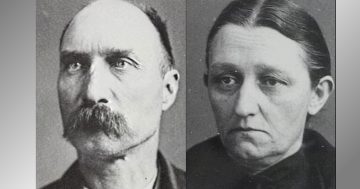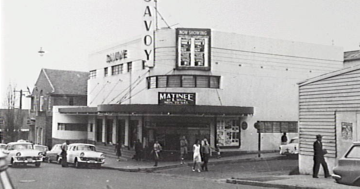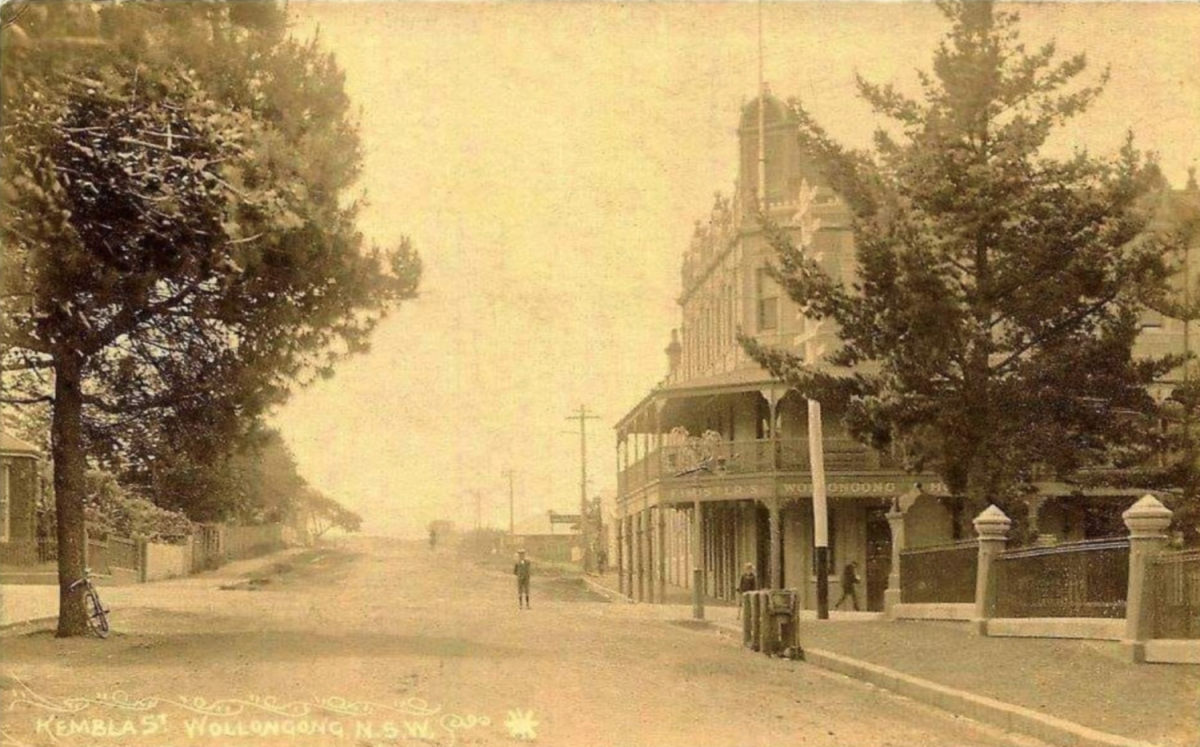
The Wollongong Hotel in Kembla Street, pictured in a 1906 postcard, was built in 1902 but demolished in a “midnight raid” in the 1980s. Photo: Supplied.
If you are old enough you will probably know that the heading on this article has been purloined from the pop song sung by the once internationally famous Melanie Safka,
a singer who even once performed live in the Wollongong Town Hall in the 1970s.
Recently, however, a friend of mine opined that “developers will never have to go broke underestimating how unfortunate some of the planning decisions have been in NSW”.
And, sadly, the four corners of the Kembla-Crown streets intersection in Wollongong as they stand in 2025 has unfortunately made it very difficult for me to try to disagree with her.
The Wollongong Hotel built for Mr W. J. Fimister in 1902 was once a local architectural wonder and, extraordinarily, one postcard manufacturer was even capable of making Kembla Street Wollongong look not only elegant but almost picturesquely “romantic”.
Shamefully, the old Wollongong Hotel – although by then no longer looking quite so good with its fine verandas long removed purportedly due to safety concerns about vehicles crashing into them – was demolished in a midnight raid in the 1980s (again presumably on safety grounds as there would likely be less traffic then) and I remember being shocked to see it in it ruins as I walked past the very next morning.
Directly opposite the 1902 Wollongong Hotel stood the 1888 Wollongong Town Hall, some bits of which still survive inside the current structure. It was a remarkable building with a very surprising design history.
William (“Wiley Coyote”) Wiley – one of the worst Wollongong Mayors of all time – came up with the idea in 1886 of a design competition for the building and offered a prize of £50 for the best design.
It was soon announced that this prize would be awarded to a Mr A. W. Hoskings and he was duly invited to the award ceremony.
Shock horror broke out when the winner, young Archer Hoskings, turned out to be only 18 years old.
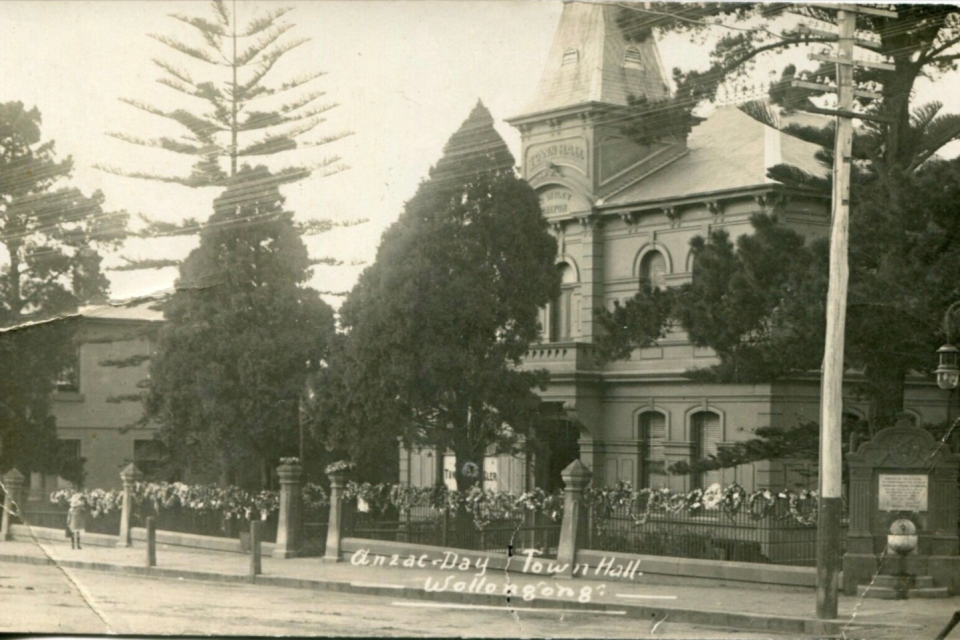
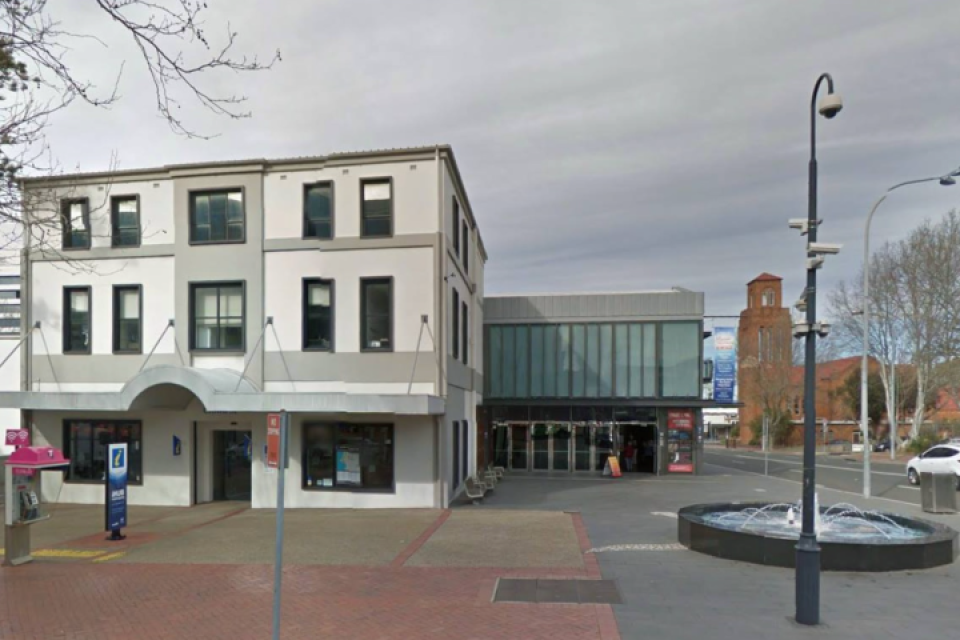
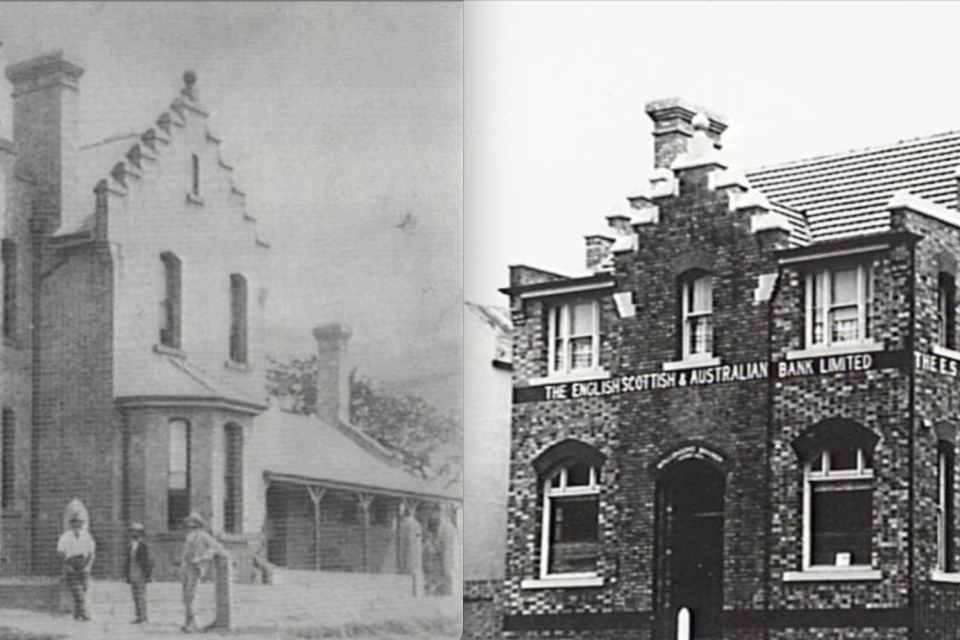
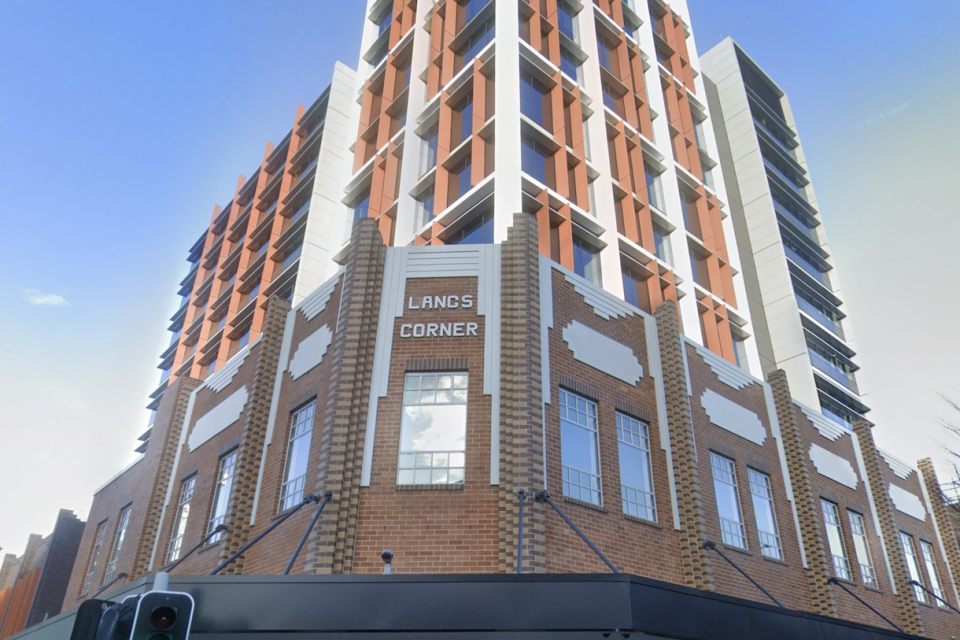

Fortunately, some face was saved because young Hoskings had recently been employed by the architects and engineers Kenwood & Kerle and so the alarm about giving the prize to what some perceived as a novice was somewhat dampened by awarding Kenwood & Kerle the contract for erecting what was indeed a rather handsome and substantial structure.
The old Wollongong Town Hall survived for a long time until its exterior was eventually massacred and its mansard roof and tower entirely removed.
The young architect, however, soon proved an inspired choice. By 1889, young Hoskings had travelled to England and become the youngest member ever admitted as an Associate of the Royal Institute of British architects.
Moreover in 1891, it was announced he shared the Traveling Scholarship provided by the celebrated architect Sir John Soane. In 1912 Hoskings would die in Johannesburg aged just 44 so mercifully he did not live to see his Wollongong Town Hall design changed almost beyond recognition.
Despite the blandness of the Wollongong Town Hall’s current facade, I was still among those who fought hard to retain the entire structure because of the wonders of the 1968 Ronald Sharp purpose-built pipe organ inside the building’s concert hall with its exceptionally good acoustics.
So good is Ronald Sharp’s organ that internationally famous players sometimes specially came to Wollongong just to get a chance to play it, as some considered it even better than Sharp’s other organ in the Sydney Opera House.
But, in addition, at this same intersection, I also lament the demise of the bank building which once stood diagonally opposite the Wollongong Town Hall.
The more recent decision to preserve only the facade of the muted art deco structure on the south western corner of the Kembla-Crown streets intersection also struck me as strange – particularly when considering that the much better buildings on other three corners of the thoroughfare have been either dramatically altered or demolished.
With the other original heritage structures long gone, why a less than inspired example of art deco brickwork fortifying a rather pedestrian high rise tower seemed the best use of the site is puzzling, at least to me.
So, in short, I certainly miss lots of bits of the old Wollongong and especially the pleasure of once walking down what was once sometimes referred to, mostly jokingly, as “The Paris End of Crown Street”.
Of course, this is all simply nostalgic musing on my part concerning changes about which I can now do nothing except bite my lip while less than cheerfully bracing the newly-created high rise wind tunnels we now have the chance to experience at most Crown Street intersections.









